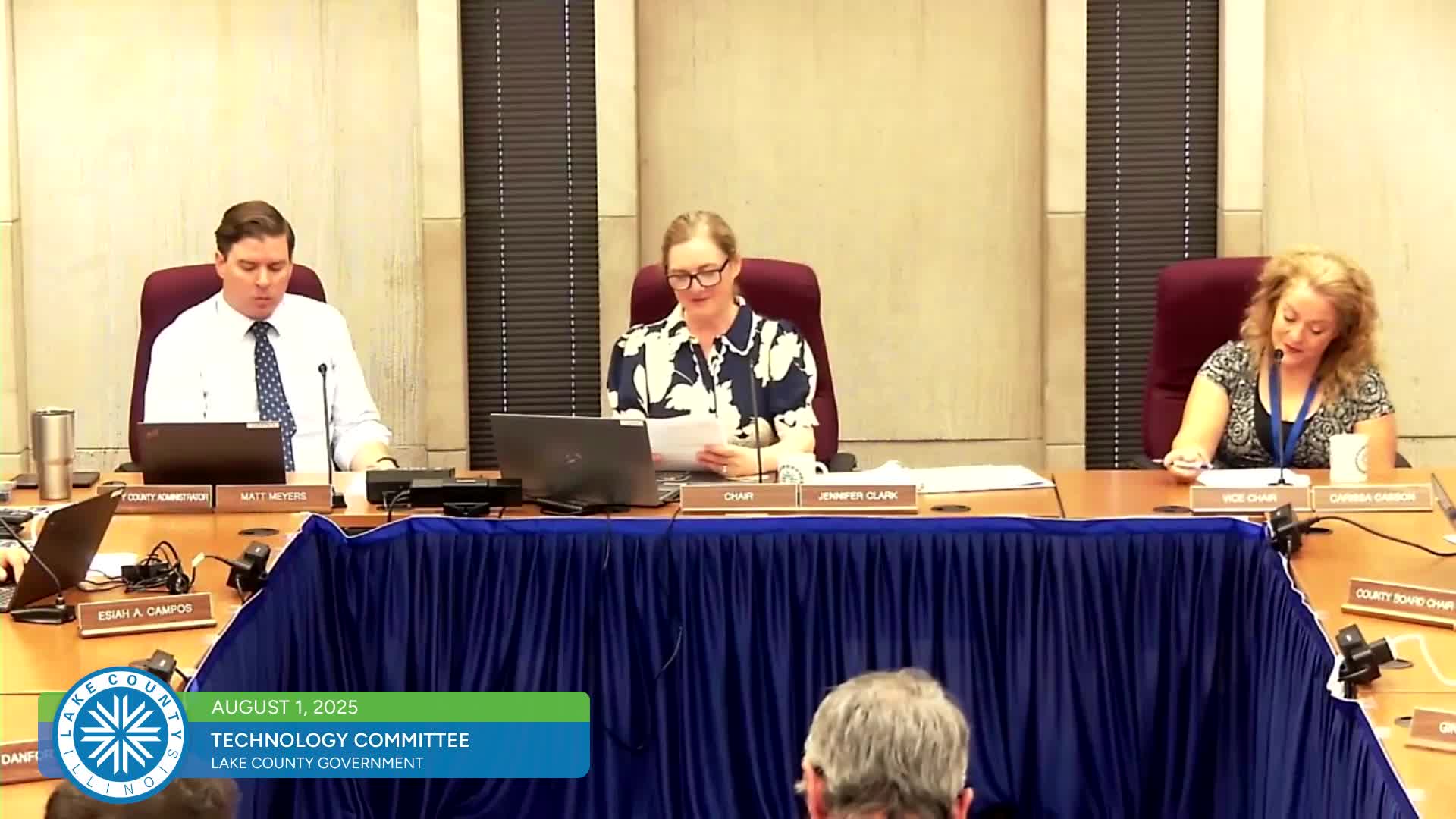Illinois Broadband Team Updates Digital Equity Initiatives and BEAD Program Changes
August 01, 2025 | Lake County, Illinois
This article was created by AI summarizing key points discussed. AI makes mistakes, so for full details and context, please refer to the video of the full meeting. Please report any errors so we can fix them. Report an error »

On August 1, 2025, the Lake County Technology Committee convened to discuss significant updates regarding broadband access and digital equity initiatives in the region. The meeting highlighted ongoing efforts to enhance internet connectivity and digital literacy, which are increasingly vital in today’s technology-driven society.
The session began with a comprehensive update on the Broadband Equity Access and Deployment (BEAD) program. Kaye Crandall, the Digital Equity Manager, and Kim Lundt, the Digital Equity Coordinator, outlined recent changes mandated by the National Telecommunications and Information Administration (NTIA). These changes include a shift to a technology-neutral framework, allowing various internet technologies—such as fiber, cable, and satellite—to qualify for funding, provided they meet minimum speed requirements. However, the removal of certain program requirements, including labor development scoring and local coordination mandates, raised concerns about the potential impact on digital equity initiatives.
The committee expressed apprehension over the implications of these changes, particularly the lack of reimbursement for digital equity training programs and the ambiguity surrounding low-cost internet options. The discussion emphasized the need for continued advocacy at the national level to restore essential metrics that ensure equitable access to broadband services.
In addition to broadband updates, the committee reported progress on public Wi-Fi projects in collaboration with the cities of Waukegan and North Chicago. Plans are underway to implement public Wi-Fi networks in key areas, enhancing internet access for residents in public spaces. This initiative aims to bridge the digital divide by providing free internet access in parks and community areas, which is expected to significantly benefit local residents.
The meeting also introduced two new digital navigators who will assist residents in navigating technology and accessing online resources. Their work is part of a broader effort to improve digital literacy, with metrics indicating that over 1,900 unique residents have already benefited from various digital training programs.
As the meeting concluded, the committee reaffirmed its commitment to monitoring the evolving broadband landscape and engaging with internet service providers to ensure that affordable and effective solutions are prioritized. The discussions underscored the importance of collaboration among local governments, community organizations, and residents to foster a digitally inclusive environment in Lake County.
The session began with a comprehensive update on the Broadband Equity Access and Deployment (BEAD) program. Kaye Crandall, the Digital Equity Manager, and Kim Lundt, the Digital Equity Coordinator, outlined recent changes mandated by the National Telecommunications and Information Administration (NTIA). These changes include a shift to a technology-neutral framework, allowing various internet technologies—such as fiber, cable, and satellite—to qualify for funding, provided they meet minimum speed requirements. However, the removal of certain program requirements, including labor development scoring and local coordination mandates, raised concerns about the potential impact on digital equity initiatives.
The committee expressed apprehension over the implications of these changes, particularly the lack of reimbursement for digital equity training programs and the ambiguity surrounding low-cost internet options. The discussion emphasized the need for continued advocacy at the national level to restore essential metrics that ensure equitable access to broadband services.
In addition to broadband updates, the committee reported progress on public Wi-Fi projects in collaboration with the cities of Waukegan and North Chicago. Plans are underway to implement public Wi-Fi networks in key areas, enhancing internet access for residents in public spaces. This initiative aims to bridge the digital divide by providing free internet access in parks and community areas, which is expected to significantly benefit local residents.
The meeting also introduced two new digital navigators who will assist residents in navigating technology and accessing online resources. Their work is part of a broader effort to improve digital literacy, with metrics indicating that over 1,900 unique residents have already benefited from various digital training programs.
As the meeting concluded, the committee reaffirmed its commitment to monitoring the evolving broadband landscape and engaging with internet service providers to ensure that affordable and effective solutions are prioritized. The discussions underscored the importance of collaboration among local governments, community organizations, and residents to foster a digitally inclusive environment in Lake County.
View full meeting
This article is based on a recent meeting—watch the full video and explore the complete transcript for deeper insights into the discussion.
View full meeting
